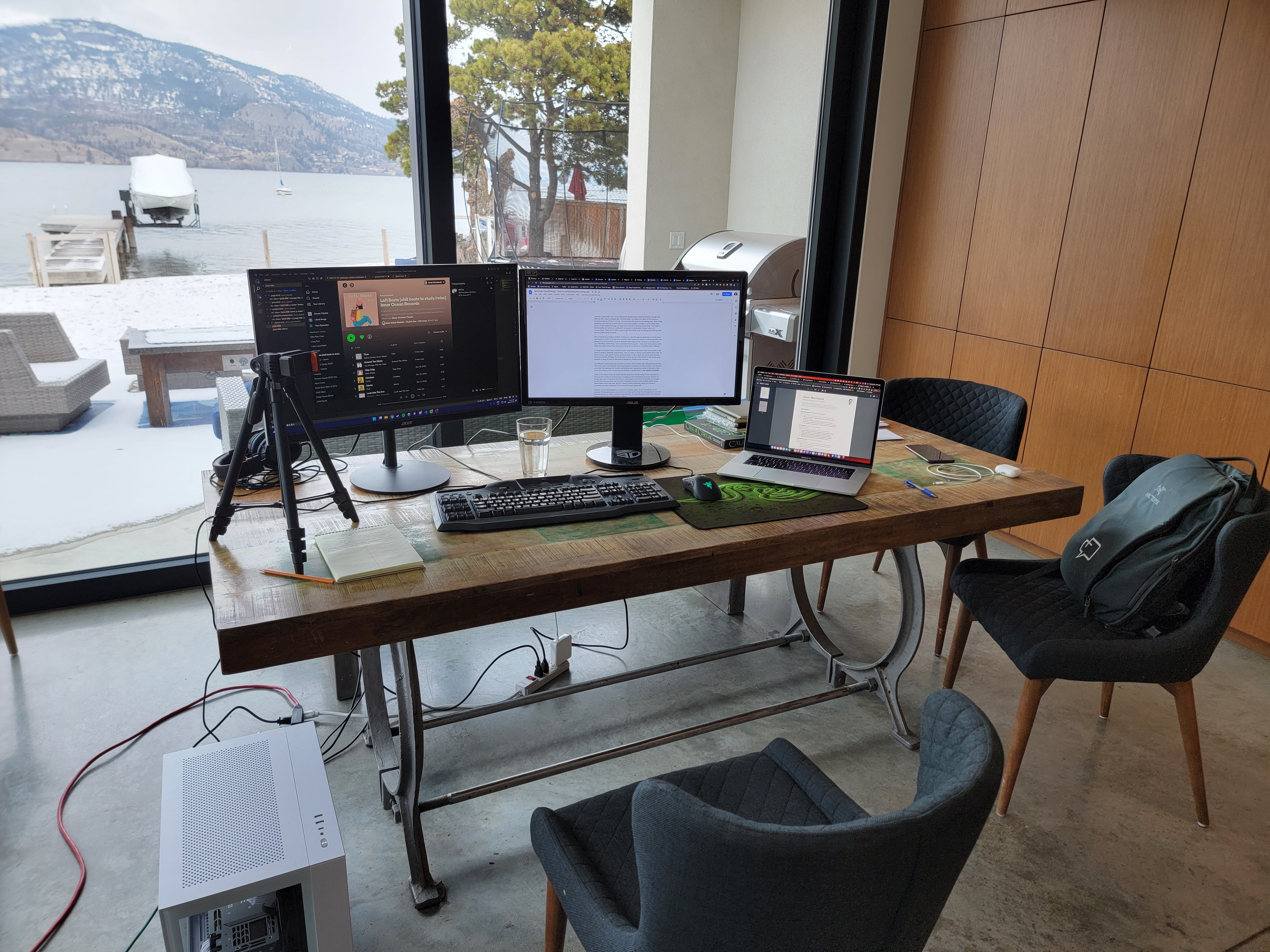Mindfully Overthinking
The Football player doesn't get any better at the game by wearing their equipment at the dinner table.
I'm happy to be in a mindful state as I write this. The sounds in this room are all calming ones. None of the appliances near me are working too hard. My PC is humming quietly. The fridge is barely audible. I’m sitting at a makeshift workspace in my brother’s kitchen where I’m house-sitting. There are no traffic noises in this lake house, only the odd goose honking, or the hum of a plane flying overhead.

The title on this document reads "Mindfully Overthinking", and as I began writing about how Mindfulness can become Escapism, I found myself in an unmindful state which failed to produce anything noteworthy.
In this act of trying to remember what I wanted to share, I experienced the exact topic of the article. I was back in a state of mindfully overthinking. I was in a state of “trying to accomplish some task, while also being mindful”. In other words, a state where my brain had been given a task to figure out, and so was cranking away on a solution, while I tried to be mindful of it all.
The difficulty I experienced then was one that any creator will be familiar with, although perhaps they have never experienced it as clearly as I was lucky enough to experience it in that moment. I was trying to remember an experience that happened earlier in the day so that I could write about it now. Can you see the problem in that approach? I wasn’t in a creative state. I was trying to remember.
Working from memory and logic is such an awful state to create from. It’s like trying to draw a face from memory compared to drawing someone as they sit in front of you, or singing a half remembered song compared to singing along with a song on the radio. In both these cases, your performance is a struggling attempt that results in an inaccurate representation of what you were trying to capture.
Creation is an act that happens on a moment to moment basis. It’s an embodiment of the moment distilled into something external. This seems to apply the same way across every art form. The best work comes from the people who are fully immersed in their art. Music, writing, acting, or dancing… In a beautiful performance, the trying individual is replaced by an embodiment of the art.
The same applies to practicing mindfulness.
The beauty of mindfulness comes when you inhabit each experience fully. Just sitting inside the experience of what is happening. In this moment, for me, it is the clicking of the keys, the flowing of ideas, the sounds of the room, the breath, and more.
The simplest way to see it is to just define mindfulness as putting all of your attention on the thing you are experiencing, or more simply, the thing you are doing. For example, at this moment you are reading, so to be mindful, all you have to do is let the stream of these words flow through you and be there as it happens.
The stumbling block I want to point out in this article happens when you think about mindfulness as some limited set of actions, like breathing, listening, thinking, feeling, seeing, and hearing. While it can be an extremely useful mindfulness practice to sit in a quiet place and focus purely on your breath, the practice of continuous mindfulness must be to pay attention to everything that your moment to moment life brings. This means releasing that limited set of mindful states (breathing, feeling, etc.) to make room for intensity, surprise, shock, envy, pain, confusion, hard work, overthinking, embarrassment, uncomfortability, anxiety, depression and everything else that you can be fully present for and experience every day. (replace with best way to describe any state)
This mistake is one I’ve struggled with for a long time. The mistake is in the attempt to purposefully reduce the present moment down to fit your own definition of mindfulness. This is not mindfulness, it is escapism. I say this because although I have reduced many moments down to fit into my own definition of a “relaxed mindful state”, that peace has always come at the cost of escaping from a piece of the present moment, of ignoring some pain, or anxiety, or pressure. The peace only came about because of the sacrifice of a part of the moment.
Sometimes the sacrifice is a state of deep focus. Other times it is the sacrifice of a flurry of thoughts and goals, all clashing for attention. Sometimes it is the sacrifice of a ball of tension in your stomach. The power of mindfulness comes when you move closer into those stressors to inhabit them more fully, not in running from them.
This does come with a few caveats. Namely there are times when your awareness should be reset back to neutral. Your experience can become too busy, like a computer with too many programs being run at the same time. With a backlog of thoughts and emotions (things) waiting for your attention you might feel that you only have 10% leftover to focus on the thing in front of you. This overload includes the “mindful practices” of focused breathing or feeling. Focusing on a few breaths for 10 seconds in between 10 other things on your mind is not helpful. Adding that extra task of feeling your breath along with the rest of the things piling up is not helping.